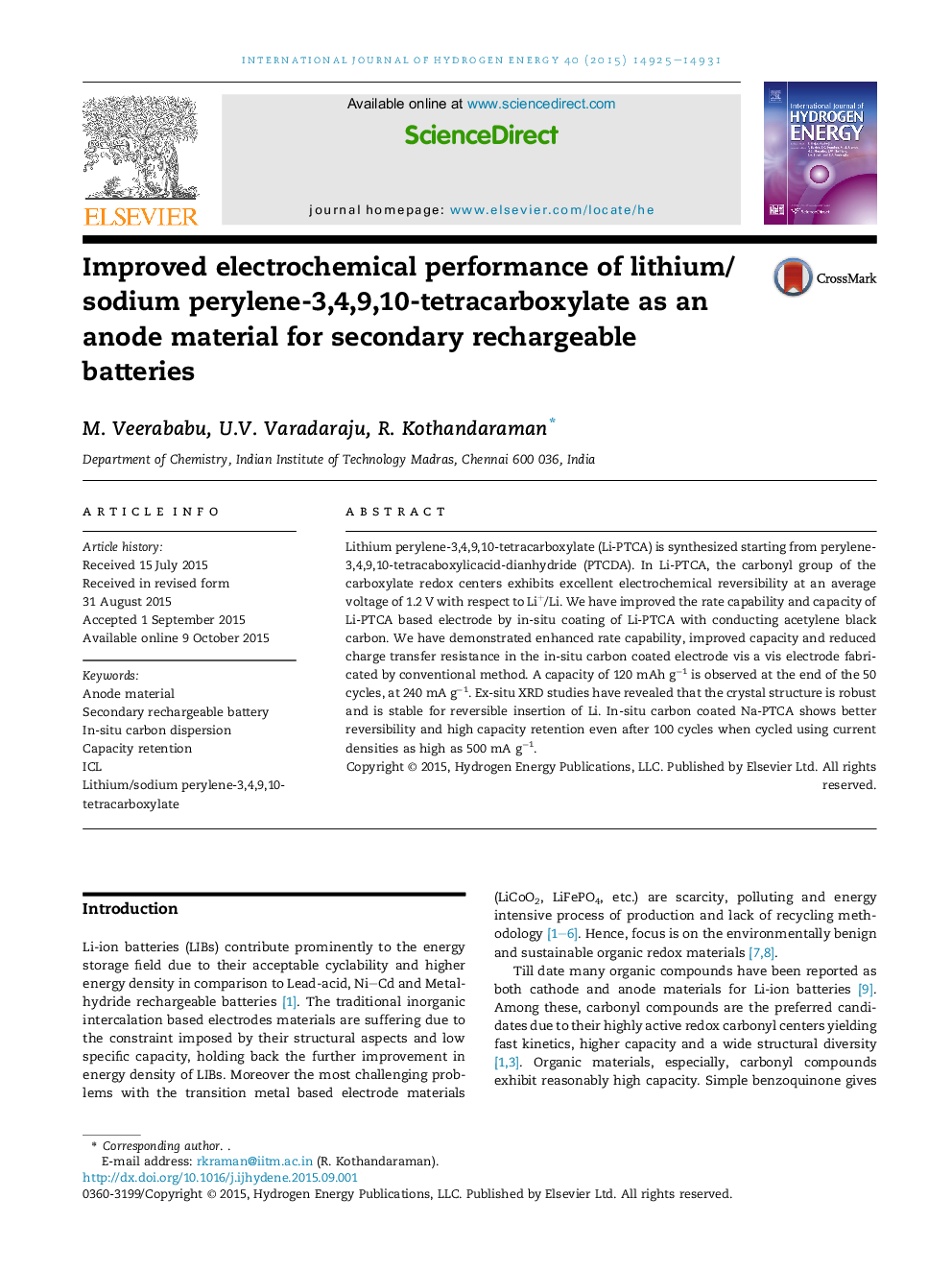| Article ID | Journal | Published Year | Pages | File Type |
|---|---|---|---|---|
| 1274262 | International Journal of Hydrogen Energy | 2015 | 7 Pages |
•In-situ carbon dispersion improved the conductivity of electrode.•Structural stability of Li-PTCA/Na-PTCA were examined by ex-situ XRD studies.•Electrode-B exhibited improved capacity, capacity retention and rate capability.•Na-PTCA anode shows excellent reversibility even after 300 cycles.
Lithium perylene-3,4,9,10-tetracarboxylate (Li-PTCA) is synthesized starting from perylene-3,4,9,10-tetracaboxylicacid-dianhydride (PTCDA). In Li-PTCA, the carbonyl group of the carboxylate redox centers exhibits excellent electrochemical reversibility at an average voltage of 1.2 V with respect to Li+/Li. We have improved the rate capability and capacity of Li-PTCA based electrode by in-situ coating of Li-PTCA with conducting acetylene black carbon. We have demonstrated enhanced rate capability, improved capacity and reduced charge transfer resistance in the in-situ carbon coated electrode vis a vis electrode fabricated by conventional method. A capacity of 120 mAh g−1 is observed at the end of the 50 cycles, at 240 mA g−1. Ex-situ XRD studies have revealed that the crystal structure is robust and is stable for reversible insertion of Li. In-situ carbon coated Na-PTCA shows better reversibility and high capacity retention even after 100 cycles when cycled using current densities as high as 500 mA g−1.
